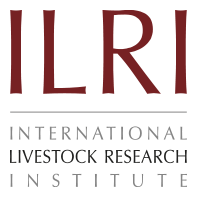Pig breeds
Daweizi Pig
Zoology conditions: Daweizi pig is found in Datuopu of Hunan Changsha city suburb and Nantuo of Changsha county (generally called Daweizi in the past). It is also found in Xiangtan, the eastern of Hunan. The region of where Daweizi Pig is kept is low-lying, with rich soils; the climate is hot and humid. The main crop is rice but vegetables are also important. By-products from the grain industry provide chaff and dregs which provide feeds for the pigs. The local inhabitants raise pigs under very meticulous management, paying special attentions to sows during the latter stage of pregnancy, and ensuring all piglets are well taken care of.
To meet the need of fresh meat in Changsha City market, the local inhabitants select the pigs of medium size and high reproductive performance, early maturing and the ones that fatten easily. Daweizi pig was formed gradually from many years of artificial selection. According to classification of Pig Breeds in China, Daweizi Pig was classified as Central China type (Zhang et al, 1986).
Appearance Characteristics: The breed has a symmetrical medium-size body with beefy physique and an upright posture. It has fine limbs with white pipe. it is docile and has flexible feedback. its skin is thin and loose, the hair is sparse and thick with luster, the backside hair is black. the head of the pig is comely with a wide forehead, right nose, short mouth, trim lips, big and bright eyes. The ears droop and have a 93B0CB94 shape, hard root and thin tip. It also has moderate neck length, wide and tiny concave waist, wide and deep chest, bulgy belly but do not drag land. The teats are visible and average number is more than 14. The hindquarters are broad and slightly inclined, plumpy thigh and short thick tail.
Production performance: Daweizi pig matures rather early, boars can produce viable sperms and therefore be used for breeding at 90 days. First oestrus is observed in gilts at about 120 days and at 150 days when they attain a body weight of betweens 35 and 40 kg gilts could be suitable for mating. Average litter size of first parity is 9.33, and that of later parities is usually more than 12 (Zhang et al, 1986).
The fattening performance of Daweizi pig is good, and the pig reaches an average body weight of 60-70 Kg at 6-7 months of age. They are usually slaughtered at 6-7 months of age and have an average dressing percentage of 64.65%.
Breed utilization: Dawazi pigs are used for crossbreeding with Landrace and Yorkshire (sire) breeds. The resultant crossbreds are better than in Daweizi pig in live weight, mothering ability and ablactated weight at 60 days age, while maintaining similar litter size as the Dawazi. The average daily gain of F1 (Landrace A1C1Daweizi) is quite good. Also crosses with Xianghuang and Duroc sires are common. The performance of the crossbreds from Xianghuang pig Daweizi pig and DurocA1C1 Daweizi pig are quite good, with average litter size of 13.62 and 13.12, 92.24% and 89.49%, survival rates; and 190.63Kg and 173.70Kg ablactated weight at 60 days of age; Average daily gain (ADG) of 579.21g and 539.75g; and % lean of 55.94% and 54.94%, respectively (Liet al, 2003).
Evaluation of the genetic diversity: Tao et al(1992) studied the genetic relationships of the local pig breeds of Hunan province using the protein polymorphism electrophoresis of improved starch gel on the serum Prealbumin (Pa), Postalbumin (Po), Transferrin (Tf), Ceruloplasmin (Cp), Hpx and Am. Their results showed polymorphism among the loci except for the Cp in the Daweizhi breed and the Daweizhi breed clustered with the Zhixin, Dongshan'an breeds in the same phylogenetic tree branch.
Yang et al (2003) studied the genetic variation of Daweizhi breed with a set of 27 microsatellite markers recommended by the Food and Agriculture Organization of the United Nations and International Society of Animal Genetics (FAO-ISGA). They showed that all of these markers were polymorphic, the smallest and largest number of the alleles of one locus were eight (SW951) and twenty-four (S0068), the mean number of observed and effective alleles were 14.46 and 8.25, respectively. The respective observed and expected heterozygosity estimates were 0.868 and 0.668. The results showed that the Daweizhi was genetically closely related to the Central China type breeds, which was consistent with the phenotypic and geographic classifications.
References
1. Li Z. S. Performance testing of different Daweizhi Pig crosses. Hunan Animal Husbandry and Veterinary. 2003, 2: 8-10.
2. Tao J. and Y. Zhou, Biochemical genetic research on the blood relationship among native pig breeds in Hunan, Acta Veterinarian et Zootechnica Sinica, 1992, 23(1) 13-21.
3. Yang S.L, Z.G. Wang and B. Liu et al, Genetic variation and relationship of eighteen Chinese indigenous pig breeds, Genet. Sel. Evol. 2003, 35: 657-671.
4. Zhang Z.G., B. T. Li, X. H. Chen et al, Pig Breeds in China. Shanghai Scientific and Technical Publishers. 1986 pp84-86.






